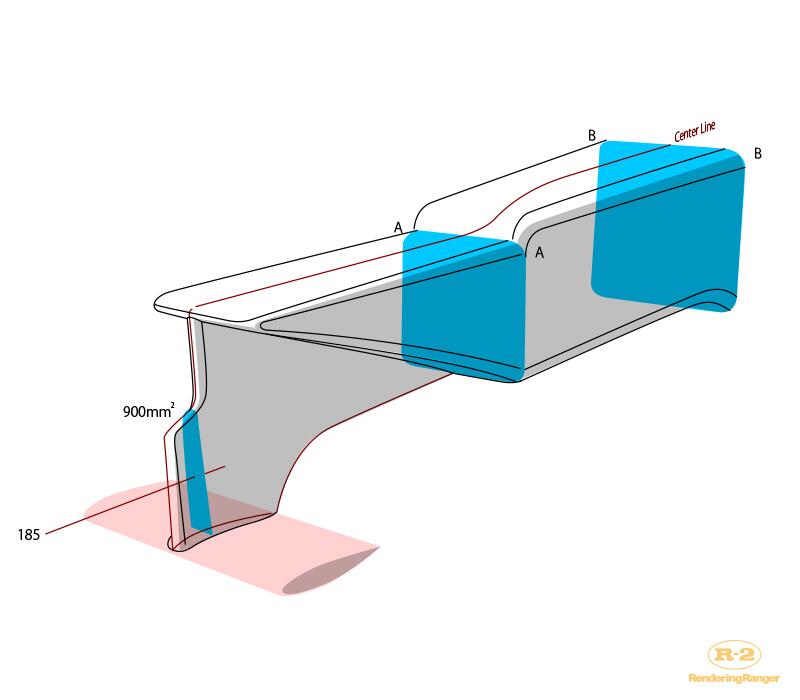There is also in play mandated COfG of front 90 000 mm^2 crossection. Dont forget that!
Fia_Tech_2014_regs wrote:It must have a single external cross section, in horizontal projection, of more than 9000mm² at a point 50mm behind its forward-most point. Furthermore :
a) No part of this cross-section may lie more than 250mm or less than 135mm above the reference plane.
b) The centre of area of this section must be no more than 185mm above the reference plane and no less than 750mm forward of the front wheel centre line.
So i think all pictures should take that also in account...
lio007 wrote:There is one question that came into my mind.
In terms of blown diffusers: are there any other possibilities or smart design solutions to get some“ strong flows of air“ to seal the diffuser?
Wild thoughts:
To make an additional intake at the beginning of the sidepods behind the bargeboards, then make a duct through the whole sidepods , accelerate the air in this duct (I really don’t know if this acceleration is possible, if you get enough air or how you can achieve that). Finally the outtake of this duct is similar to the exhaust exit from the 2011-blown-diffusers.
Nope to low energy and also to much drag for really no gain. Remember Ferrari had just that kind of problems with acer ducts in 2012.
Or: To make additional exits on the turbocharger. This outtakes don’t exit exhaust gases but „normal air“. This „turbocharged air“ is ducted to similar exhaust-exit positions from the 2011-blown-diffusers. I really don’t know if you can feed the turbocharger with two types of gases an handle them seperated.
To be honest, I’m no aerodynamicist as no engine-specialist. So this are only some ideas without any special thechnical background.
No! Rules are very strict here all fluids which enter turbo must also exit on the exhaust tailppipe... Look F1 turbo engine thread and there we all agree that there only possibility to instal ERG. Sadly nothing elso you can do with exhaoust unless just couple monkey farts (

)...
"And if you no longer go for a gap that exists, you're no longer a racing driver..." Ayrton Senna



